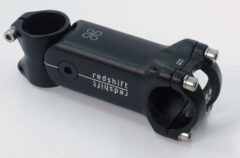Saddle comfort is extremely important for long-distance cyclists. Finding a truly comfortable bike saddle is difficult, but problems can be avoided or minimized by finding the right combination of a saddle, shorts, tire pressure, riding position, and seatpost.
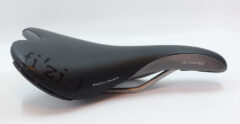
Page Contents:
Saddles
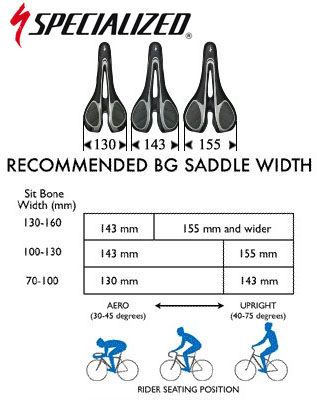
Finding a saddle that works well for you can be a lengthy and possibly expensive process. If you buy a saddle from any good bike shop then they’ll advise you as to which model is more likely to work for your anatomy and riding type, let you try it for a few rides, and exchange it for a different model if it is not working for you, and repeat this process until you find one that you’re happy with. A new saddle might not feel good straight away, so unless it’s obviously wrong, give it a couple of good rides.
Some brands (e.g., Specialized) believe the saddle should be optimized for the width of your sit bones, and so offer each of their models in various widths. Other brands (e.g., Fizik) differentiate people by how much flexibility they have, offering flatter models for more flexible people and more curved models for less flexible body types (see the diagrams on the right).
Saddles also vary greatly in the amount of padding. Most long-distance cyclists opt for something with a moderate amount of padding, but there are people who are very happy for long periods on saddles with either minimal or very thick padding. Lastly, some people swear by leather saddles that slowly adapt to the form of their body over time, so can become extremely comfortable. Furthermore, some people find that having a hole or channel down the center of the saddle is essential for comfort; other people (myself included) find that this creates two uncomfortable ridges of pressures either side of the hole and prefer to have their weight evenly distributed across the full area of the saddle. Side curvature and platform curvature also vary. See this video by Art’s Cyclery for a discussion of all the variables.
When assessing saddles, keep in mind that price and comfort have a very weak correlation, so don’t think that you have to spend a lot of money to get a really comfortable saddle. If you are able to find a saddle that you really love then I recommend immediately buying several of the same model because when you need to replace your favorite saddle due to a crash or because you get another bike then your favorite model is guaranteed to not be available anymore or have been changed slightly.
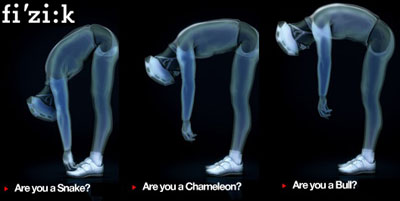
A lot of people ask what my personal preferred saddle is, but I hesitate to say because it’s not that much more likely to work for someone else than are many others. In fact, I ride the Fizik Aliante, but only the version that was available from about 2005-2015, which was quite popular among ultracyclists. Unfortunately, when the updated version was released it had a similar shape but a lot less padding and so I find it to be far less comfortable. The most similar saddle to my Fizik Aliante that is currently available is the Fabric Scoop Shallow (Amazon).
I recommend on the Hand Comfort: Handlebars, Aerobars & Gloves page that you change hand positions on the bars frequently to avoid hand problems. Using different hand and body positions will not only help your hands but can also help your backside because it changes the orientation of your pelvis on the saddle, and so moves the pressure points around. Using the drops and aerobars also tends to put more weight on your arms and less on your butt than using the hoods or tops. If your saddle is reasonably flat from front to rear then there is probably more than one position that can be used comfortably, and so moving around on your saddle will also help significantly.
GCN shared some similar tips in this video:
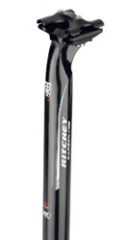
Seatposts
Certain seatposts are designed to improve comfort due to their materials and design. BikeRadar did an objective test of several such models. I’ve used the Ritchey WCS Carbon Link FlexLogic (Amazon) mentioned in the article and am very pleased with it. I’ve also used the Specialized CG-R (formerly called Cobble Gobbler), which works well but forces the saddle to be positioned reasonably far back due to the 25 mm of setback. A more extreme option for seatpost comfort is the Cane Creek Thudbuster ST (Amazon), which incorporates an elastomer shock absorber.
Cycling Shorts
I like to consider the saddle and bike shorts as a system that works together. My saddle has a moderate amount of padding and the only decent-quality shorts that I’ve found to be uncomfortable are those with a very thick or bulky pad (e.g., Assos shorts definitely don’t work for me). In contrast, many people who prefer to use a saddle with much less padding than I do often prefer a much thicker pad (e.g., Assos shorts). Just like with saddles, price and comfort of shorts has a very weak correlation once you avoid the really cheap options.
In addition to pad thickness, cycling shorts also vary in terms of the fore-aft position of the chamois, see this article at BikeRadar, which is something that I’ve had a problem with in a couple of models of shorts. Fit is also important because shorts that are too large may move around and cause friction between the shorts and your skin and obviously those that feel tight and restrictive will be unsuitable. The fabric in shorts that are several years old may loose its elasticity and the pad might degrade, so it’s a good idea to replace your shorts occasionally.
Hygiene & Chamois Cream
Finding (1) the right saddle shape and (2) the right amount of padding between the saddle and shorts is normally not sufficient to prevent saddle sores on multi-day, ultra-distance rides. The third important ingredient is hygiene. If salt or dirt builds up in your shorts then saddle sores will develop far more quickly. Salt builds up more quickly on hotter days due to sweating and dirt can accumulate quickly if riding on wet roads if you don’t have Fenders or waterproof overshorts. It’s therefore important to wash yourself and your shorts regularly, once per day is my goal, but some people can survive with a lower frequency.
Washing your clothes in a bathroom sink with any soap that is available is reasonably effective and if a towel is available then you can dry them significantly by rolling them up in the towel and standing on it. This is difficult to do when not sleeping in a hotel, but bathrooms in restaurants or other public facilities can sometimes be used. Carrying some wet wipes / baby wipes is a good idea to help get the important parts of your body clean at the end of the day when no bathroom is available.
Most people carry only one pair of cycling shorts during an unsupported race, but taking a second pair can be a good idea because it makes it more likely that you can put on a clean pair every morning. Some people also find that rotating between two different pairs of shorts is useful because different brands and models have the pad and stitching in slightly different places so that friction is not experienced on the same patches of skin all the time. If carrying a second set of shorts prevents the worst of the saddle sores and so helps you to stay on the bike for just one minute extra per day or push on the pedals a tiny bit harder then that will more than make up for the minuscule effect of the extra weight (see the The Actual Effect of Weight on Cycling Speed page).
It’s a good idea to get into the habit of at least briefly standing up while riding on a somewhat regular basis. This not only relieves pressure for a few moments, but also allows air circulation to cool you down, blood to circulate normally, and to help sweat evaporate away from your shorts. Going over the top of a rolling hill or pulling away from an intersection are good opportunities to stand up. If you start developing a habit of doing so regularly without thinking about it then your butt may thank you at the end of a long day. Also stand, or at least unweight the saddle, when riding over bumps or rough sections of road to avoid the worst of the jostling and impacts.
Chamois cream can be useful to reduce friction between your shorts and your skin. I’ve never needed to use any cream, and in general I advise not using it unless you are having problems, whereas other people recommend using cream for every ride, regardless. As a precaution, I do take a few single-use sachets with me when doing a bikepacking race, but fortunately I haven’t needed them yet. Keep in mind that chamois cream will only resolve problems that are due to friction; cream will not change the shape of a saddle that doesn’t fit you well. See this article at road.cc for a guide to some chamois creams.
The GCN boys share their tips on saddle comfort in this video:
How Tire Width & Pressure Affects Saddle Comfort
After the saddle, the next most important factor determining a bike’s comfort is the amount of air pressure in the tires. Using wider tires can help a lot because they can be run at a lower pressure without increasing the risk of pinching an inner tube. Tubeless tires can be run at an even lower pressure than traditional tires with tubes because there is virtually no risk of pinch flatting a tubeless tire.
Recent research has shown that many 25 mm wide tires have no worse Rolling Resistance than a similar tire that is 23 mm wide, and the 28 mm version is often also similar. To optimize the Aerodynamics of your front wheel, the front tire shouldn’t be wider than the rim (which is one reason why modern, wider rims are much better than traditional, narrow rims), but comfort may be more important than aerodynamics. The aerodynamic effect of the rear tire is far less important than that of the front tire, so it may be wise to use a wider tire on the rear for comfort and a slightly narrower one on the front for aerodynamics.
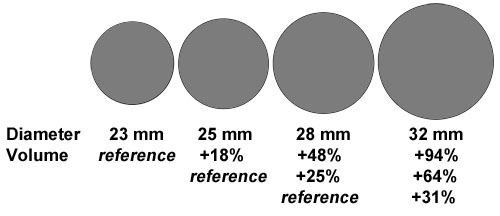
The difference in tire width between 23, 25, and 28 mm might sound small, but in fact it’s the volume of air in the tire that is important, which is determined by the square of the width, so 25mm tires have 18% more volume than 23mm, and 28mm have 48% more air volume! In some road frames and forks, 25 mm tires are the widest that will fit, and in many 28 mm is the limit. Bikes that use Disc Brakes normally have more tire clearance than those that use rim brakes.
Wider tires are not any more comfortable than narrower tires if they are all inflated to the same pressure, so see this article at road.cc to understand how to vary your tire pressure based on the width.
Finding a tire that has the desired width can be complicated because the manufacturers’ stated widths often don’t correspond to the width of the tires when mounted on your rims. It is only the measured width that matters, which may be up to 2mm wider or narrower than the manufacturer’s stated width, especially when using a modern, wide rim (see also this blog post by November Bicycles).
Last significant page update: November, 2016
This page is in the Rider Comfort section. The next page in this section is:

